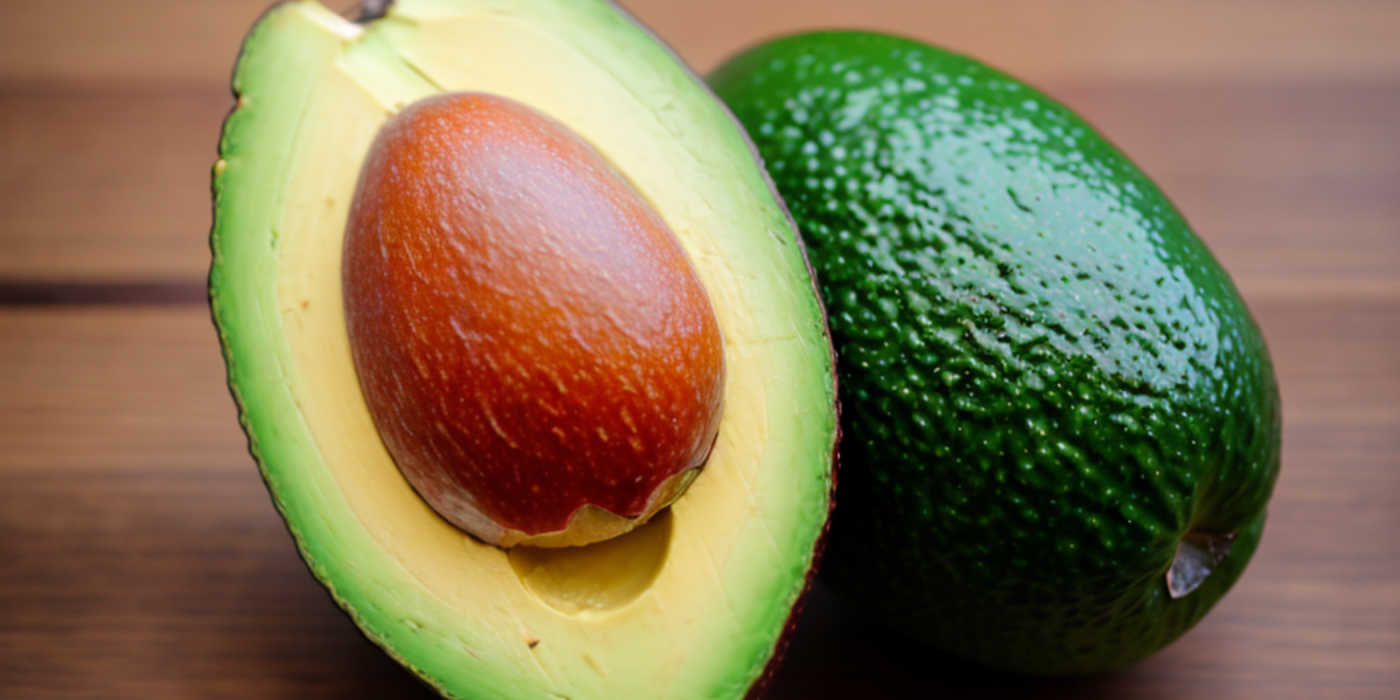Mastering the WeightWatchers Diet: A Comprehensive Guide to Healthy Weight Management

Dieting isn't just about losing weight; it's about adopting a healthier lifestyle. In this context, one diet plan stands out, not only for its popularity but also for its unique approach - the WeightWatchers diet.
Understanding the WeightWatchers Diet
Known for its distinctive points system and supportive community, the WeightWatchers diet, now rebranded as WW, has cemented itself as a leading player in the world of weight management. Launched in the 1960s, WeightWatchers has evolved over the years, adapting its plan to contemporary research on diet and nutrition, ultimately emphasising a more holistic, sustainable approach to weight loss and health.
WeightWatchers' diet strategy doesn't merely focus on cutting calories but instead, it encourages healthier eating choices and a more active lifestyle. Its SmartPoints and ZeroPoint foods systems are designed to help you make nutritional trade-offs, thus nudging you towards healthier options and portion control. This approach, along with the ongoing support provided by the WeightWatchers community, aims to facilitate long-term, sustainable weight loss and healthier habits.
Purpose of the Article
As we delve into the specifics of the WeightWatchers diet, this article aims to offer you a comprehensive understanding of its methods, benefits, and practical application. Whether you're considering joining the WeightWatchers community or simply interested in learning more about different dieting options, this guide will equip you with the necessary information to understand why and how the WeightWatchers diet has garnered such widespread recognition.
Origins and Philosophy of the WeightWatchers Diet
Delving into the genesis and guiding principles of the WeightWatchers diet provides essential insight into its effectiveness and global popularity.
The Birth and Evolution of WeightWatchers
The WeightWatchers diet, now known as WW International, was conceived in the 1960s by Jean Nidetch, a New Yorker who began hosting friends at her home to discuss successful weight loss strategies. As its benefits spread by word-of-mouth, this small group expanded into what we now recognise as WeightWatchers - a worldwide network supporting millions in their weight loss journeys.
Over the decades, WeightWatchers has evolved, adapting to new scientific research and societal attitudes towards diet and exercise. The current iteration is arguably the most personalised, using modern technology to tailor the diet to individual dietary needs, preferences, and goals.
Embracing a Holistic Philosophy
At the heart of WeightWatchers is a philosophy that encourages long-term, sustainable weight loss, rather than quick, potentially unhealthy fixes. The diet is designed not merely as a short-term solution but as a holistic lifestyle change.
WeightWatchers champions healthier food choices through its unique points system, promoting nutrient-dense, satisfying foods over calorically empty alternatives. However, the philosophy extends beyond diet, embracing a more active lifestyle and a positive mindset. Exercise earns participants additional points, while regular group meetings or online engagement provide valuable community support.
In essence, WeightWatchers seeks to equip members with the knowledge, skills, and support necessary to make healthful, rewarding decisions – not just in the realm of food, but in every facet of life. It's more than a diet; it's a comprehensive approach to well-being.
Understanding the WeightWatchers Points System
Central to the WeightWatchers diet is their unique points system, designed to provide a flexible and straightforward approach to healthy eating and weight management.
The SmartPoints System
The SmartPoints system is an integral part of the WeightWatchers diet. Each food and drink item is assigned a SmartPoints value based on its nutritional content - namely, calories, saturated fat, sugar, and protein. Foods high in saturated fats and sugar have higher points, while those high in protein have lower points. The aim is to guide participants towards healthier, protein-rich foods while keeping a check on their consumption of fats and sugars. Each participant receives a daily and weekly SmartPoints budget, taking into consideration their age, weight, height, and gender. The flexibility lies in the choice of how these points are utilised, allowing for personal preferences and occasional indulgences.
ZeroPoint Foods
The WeightWatchers diet also features ZeroPoint foods - a list of over 200 items that don't count towards your daily SmartPoints budget. These include many fruits, vegetables, lean proteins, and some whole grains, encouraging a high intake of these nutrient-dense foods. These foods form the basis of a healthy eating pattern, and you can enjoy them without weighing, measuring, or tracking.
Promoting Healthier Choices and Portion Control
The beauty of the WeightWatchers points system lies in how it encourages healthier food choices and portion control. By assigning higher points to less healthy foods, it nudges participants towards nutrient-rich, lower-point alternatives. The need to stay within the daily points budget also naturally fosters portion control, a critical aspect of weight management.
What Can You Eat on the WeightWatchers Diet?
One of the key features of the WeightWatchers diet is its flexibility when it comes to food choices. Through a unique points system, the diet encourages healthier eating habits without imposing strict limitations or bans on particular food groups.
Understanding the Points System and Food Choices
The WeightWatchers diet utilises a points system known as SmartPoints, with each food assigned a points value based on its nutritional content. This includes factors such as calories, saturated fat, sugar, and protein. Higher points are typically assigned to foods with high levels of saturated fat and sugars, while lean proteins and foods high in fibre are assigned lower points.
As a participant, you're allocated a daily and weekly SmartPoints budget based on your age, weight, height, and sex. This allows you to choose what to eat while staying within your points allowance, promoting balance, variety, and portion control. A slice of pizza, for example, might be valued at 7 SmartPoints, a chicken breast at 3 points, or a piece of fruit at 0 points.
The Role of ZeroPoint Foods
The WeightWatchers diet also introduces the concept of ZeroPoint foods, which are foods you can consume freely without tracking or measuring, as they form the foundation of a healthy eating pattern. These include over 200 different foods such as fruits, vegetables, lean proteins like chicken and turkey breast, fish, eggs, and certain whole grains.
The beauty of the WeightWatchers diet lies in this combination of flexibility and structure. By understanding and utilising the points system, you can build an eating plan that suits your tastes, promotes weight loss, and fosters a healthier relationship with food.
What Can You Eat on the WeightWatchers Diet?
One of the key features of the WeightWatchers diet is its flexibility when it comes to food choices. Through a unique points system, the diet encourages healthier eating habits without imposing strict limitations or bans on particular food groups.
Understanding the Points System and Food Choices
The WeightWatchers diet utilises a points system known as SmartPoints, with each food assigned a points value based on its nutritional content. This includes factors such as calories, saturated fat, sugar, and protein. Higher points are typically assigned to foods with high levels of saturated fat and sugars, while lean proteins and foods high in fibre are assigned lower points.
As a participant, you're allocated a daily and weekly SmartPoints budget based on your age, weight, height, and sex. This allows you to choose what to eat while staying within your points allowance, promoting balance, variety, and portion control. A slice of pizza, for example, might be valued at 7 SmartPoints, a chicken breast at 3 points, or a piece of fruit at 0 points.
The Role of ZeroPoint Foods
The WeightWatchers diet also introduces the concept of ZeroPoint foods, which are foods you can consume freely without tracking or measuring, as they form the foundation of a healthy eating pattern. These include over 200 different foods such as fruits, vegetables, lean proteins like chicken and turkey breast, fish, eggs, and certain whole grains.
The beauty of the WeightWatchers diet lies in this combination of flexibility and structure. By understanding and utilising the points system, you can build an eating plan that suits your tastes, promotes weight loss, and fosters a healthier relationship with food.
Navigating the WeightWatchers Diet
One of the most appealing aspects of the WeightWatchers diet is its flexibility and the ability to tailor it to individual needs. However, it does require a certain level of understanding and commitment to reap its benefits fully. Here's a step-by-step guide to following the WeightWatchers diet.
Practical Tips and Guidance
The backbone of the WeightWatchers diet lies in its innovative points system. Each food and drink has an assigned SmartPoint value, determined by its nutritional content. Learning to track these points is crucial. Whether using the WeightWatchers app or traditional methods like a food diary, consistency is key. Remember, each member gets a customised SmartPoints Budget based on personal details, and staying within this budget promotes weight loss.
Planning meals can be an effective strategy to avoid exceeding your points limit. Prioritise ZeroPoint foods, the ones you don't need to track, and create a weekly meal plan that incorporates a variety of these nutritious items.
The WeightWatchers diet isn't just about food and points; it's also about community. Attend the regular meetings or engage with the online resources provided by WeightWatchers. These platforms offer much-needed support, motivation, and inspiration to help you stay on track.
Personalising the WeightWatchers Diet
The beauty of the WeightWatchers diet is that it's adaptable to your preferences and lifestyle. If you're a vegetarian, a fan of Mediterranean cuisine, or have specific dietary needs, you can adjust your food choices accordingly. Always remember the goal is to make long-term, sustainable changes to your eating habits. So, find a way to follow the WeightWatchers diet that suits you best, and enjoy the journey towards better health.
The Benefits of the WeightWatchers Diet
Throughout our in-depth guide on the WeightWatchers diet, we have explored its origins, guiding philosophy, and a distinctive points system. Now let's turn our focus to the potential benefits that this diet offers to its followers.
Potential Benefits of the WeightWatchers Diet
The WeightWatchers diet stands out for several key reasons, making it a popular choice among those seeking to lose weight and cultivate a healthier lifestyle.
-
Effective Weight Loss: The cornerstone of the WeightWatchers diet is its effectiveness in supporting weight loss. Through its unique points system, it encourages mindful eating and portion control, which can contribute to a sustainable calorie deficit and hence weight loss.
-
Flexibility: Unlike other diets that outright ban certain foods, the WeightWatchers diet is notably flexible. Every food is permissible within the points system, promoting a balanced diet rather than restriction, which can make the diet easier to adhere to in the long run.
-
Support Network: WeightWatchers offers a robust support network, with community meetings, online forums, and even personal coaching options. This community aspect can provide motivation, accountability, and a sense of camaraderie on the weight loss journey.
-
Long-Term Lifestyle Changes: The WeightWatchers diet emphasises developing healthier eating habits and an active lifestyle, fostering long-term changes rather than quick fixes. This sustainable approach can lead to enduring weight management and improved overall health.
Scientific Backing
These benefits are not just anecdotal. A number of scientific studies have highlighted the efficacy of the WeightWatchers diet for weight loss and its potential for improving metabolic health markers. This scientific backing lends credence to the diet's strategies and outcomes, affirming it as a viable option for those seeking a supported and structured weight loss journey.
Potential Drawbacks and Considerations with the WeightWatchers Diet
Though the WeightWatchers diet has numerous admirers, like any lifestyle change, it also carries a few potential drawbacks and considerations that are worth understanding before embarking on this journey.
Challenges of the WeightWatchers Diet
A primary challenge of the WeightWatchers diet can be the constant need for tracking. This diet relies heavily on the daily tallying of SmartPoints, which, while promoting mindfulness about food choices, can also feel somewhat cumbersome for those unaccustomed to such routines.
Additionally, the focus on points can potentially lead some to prioritise points over nutrition. While the system is designed to guide individuals towards healthier choices, it is conceivable that some might opt for lower-point options without considering their nutritional value. It's essential to remember that a lower points value doesn't always equate to a healthier food choice.
Professional Consultation
Although the WeightWatchers diet is generally safe for most, it's always a sound idea to consult a healthcare professional before embarking on any new diet plan. This holds especially true for individuals with chronic health conditions, pregnant women, or those who have a history of eating disorders. A healthcare professional can provide tailored advice and guide you in a way that ensures your dietary changes are beneficial and safe.
In conclusion, while the WeightWatchers diet offers a comprehensive and flexible approach to weight management, it's crucial to consider these potential challenges and consult a healthcare professional as needed to ensure the diet is the right fit for you.
Conclusion
As we conclude this comprehensive guide to the WeightWatchers diet, it's fitting to distil the key points we've addressed, to help you determine if this approach might be your ideal partner in the journey towards healthier habits and effective weight management.
Wrapping Up the WeightWatchers Diet
Throughout this discussion, we've unveiled the core principles behind the WeightWatchers diet. From its unique points system – SmartPoints and ZeroPoint foods – to the flexibility it offers, the WeightWatchers diet allows for a personalised approach to weight management. By fostering healthier eating habits and promoting an active lifestyle, it lays the foundation for sustainable, long-term weight loss.
Moreover, we've delved into the diet's potential benefits, including the prospect of effective weight loss, the support network offered through its community, and the crucial habit changes it encourages. Of course, like any diet plan, it has its potential challenges – such as the need for ongoing tracking and the risk of overemphasis on points rather than nutrition – but these are aspects that can be managed with conscious practice and balance.
Is WeightWatchers the Right Choice for You?
Your unique needs, lifestyle, and health goals must take centre stage when selecting a diet. The WeightWatchers diet, with its emphasis on sustainable weight management and healthier habits, could indeed be a worthy contender if these align with your objectives.
We encourage you to use the insights gained from this guide to reflect on whether the WeightWatchers diet might be your ticket to achieving a healthier, more balanced lifestyle.
Related to this article are the following:
I do hope you have enjoyed this article and hope that you will subscribe to my newsletter so you can get the latest information about all things naturally relaxing.
Stay in touch, join the Naturally Relaxing Newsletter
Newsletter Signup
Post Your Comments
or post as a guest
Be the first to comment.
Latest articles in Food

Hot Cross Buns This Easter: A Timeless Tradition of Baking and Sharing

Chocolate Krispie Cakes for Easter: A Simple, Festive Treat for All

2023 Christmas Culinary Delights: Recipes for the Ultimate Festive Feast

Embrace Autumn with the Best Pumpkin Spice Recipes in the UK

Turning Pumpkin Carvings into Pumpkin Pie: A British Culinary Tradition






